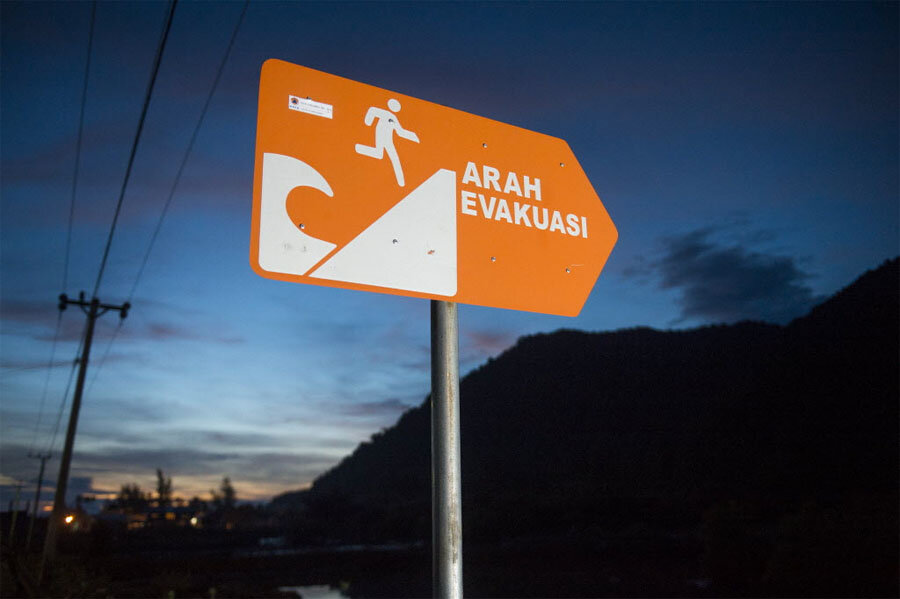Could a tsunami disaster happen again?
Loading...
When the tsunami struck in December 2004, none of the affected countries around the Indian Ocean had any advance warning. For Aceh, Indonesia, the time lag between the magnitude-9.1 undersea earthquake and the first giant wave was as little as 30 minutes. For countries located farther away from the fault line, it took hours for the first waves to arrive, meaning that a timely evacuation would have spared many lives.
Since then, a comprehensive warning system has been set up to alert coastal countries when earthquakes are judged likely to trigger tsunamis. The system mirrors the Pacific Tsunami Warning Center in Hawaii.
The Indian Ocean network relies on a series of undersea pressure sensors, mostly located near fault lines where tectonic plates meet. Readings from the sensors are transmitted to surface buoys that relay the data by satellite to onshore control centers. Government officials must then decide whether to issue tsunami warnings and evacuate shoreline areas.
Aceh, which sits astride one of the world’s most active fault lines, has installed sirens in populated areas along the coast to relay tsunami warnings. Messages are also sent to mobile phones. Evacuees are asked to gather at coastal tsunami towers: four-story reinforced-concrete buildings with rooftops that can hold 500 people and double as helipads.
In October 2009, an evacuation drill was carried out in 18 Indian Ocean countries to test their preparedness for an earthquake on the scale of the 2004 temblor. Hundreds of coastal villages and towns participated in the initiative. Government officials called the exercise a success.
But a real-life test came in April 2012 when a magnitude-8.6 undersea quake west of Aceh triggered tsunami warnings in several countries, though the anticipated waves never came. Banda Aceh, the provincial capital, failed the test: Most residents didn’t go to the evacuation towers, trusting that they could reach higher ground by car or motorbike. Instead, traffic ensnarled the city, stranding drivers within reach of a major tsunami. “It was chaos,” says Rina Suryani Oktari, a researcher at the city’s Tsunami & Disaster Mitigation Research Center.
Some residents went to the beach to watch for signs of a tsunami – a sure way to be swept away by waves that can travel more than 500 miles per hour. Parents drove to school to pick up their children, only to find themselves caught in traffic with other anxious parents. Ms. Oktari says that schools are supposed to evacuate children along designated routes, while parents are to heed their own evacuation instructions.
Even experts in the field weren’t immune to the panic. Oktari, who lived near the coastline at the time, piled her three children into her car and drove away from the shore, ignoring the evacuation routes and not stopping at any tower. “I just followed my instincts. I made the wrong decision,” she admits.








